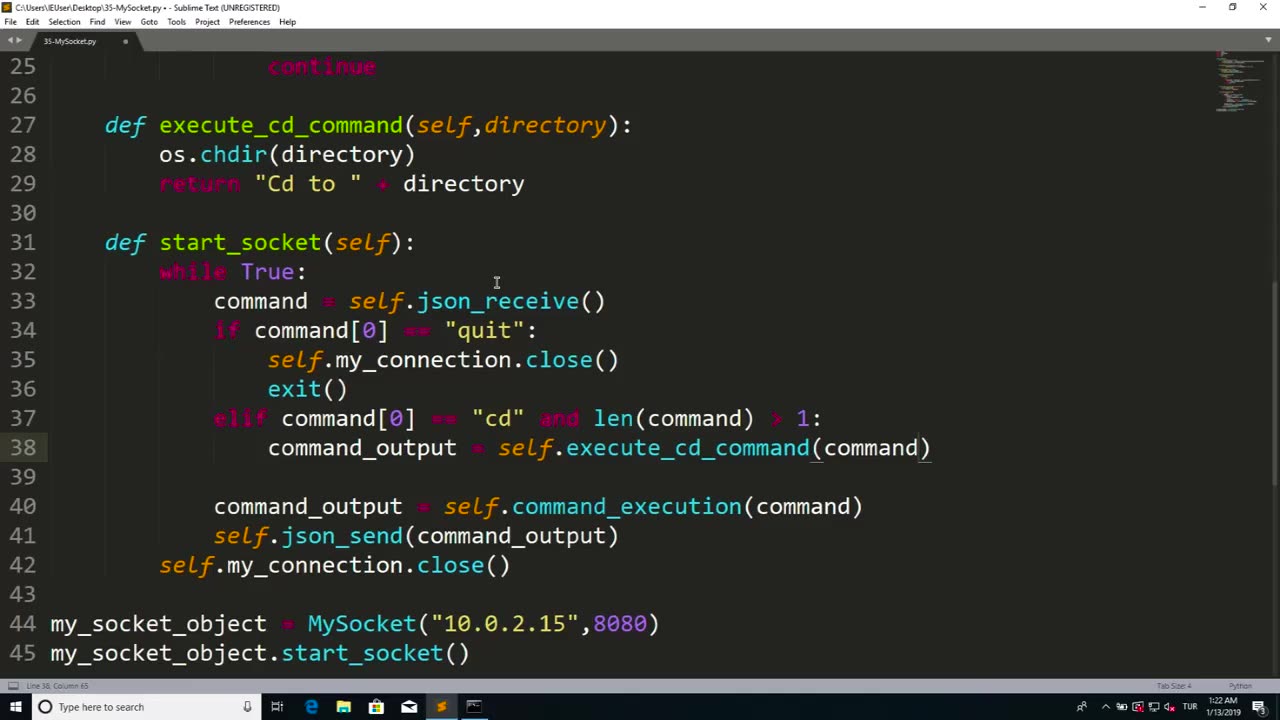Premium Only Content

Chapter-38, LEC-12 | CD Command Emplementation | #ethicalhacking #hacking #education
#ethicalhacking #hacking #rumble #virel #trending #education
Subscribe to our channel YouTube channel.❤️
/@thecybersecurityclassroom
Followe me on Rumble.💕
/@the1cybersequrityclassroom
The "CD" command, short for "Change Directory," is a command commonly used in command-line interfaces or terminal shells to navigate and switch between directories or folders within a file system. The implementation of the "CD" command may vary depending on the operating system or shell being used, such as Windows Command Prompt, Unix/Linux terminal, or macOS Terminal.
Here's a general description of how the "CD" command can be implemented:
Parsing user input: The "CD" command typically takes a single argument, which is the target directory or folder that the user wants to navigate to. The implementation of the "CD" command would involve parsing and extracting this argument from the user input, which may include checking for correct syntax, validating the input format, and handling any potential errors or edge cases.
Validating directory existence: After parsing the user input, the implementation of the "CD" command would typically involve checking if the specified target directory actually exists in the file system. This may involve verifying the directory path, checking permissions, and handling cases where the target directory is not found or inaccessible.
Changing current directory: Once the target directory is validated, the implementation of the "CD" command should perform the actual operation of changing the current working directory to the specified target directory. This typically involves updating the internal state of the command-line interface or terminal shell to reflect the new current directory, so that any subsequent commands or operations are performed within that directory.
Handling special cases: The "CD" command may also need to handle special cases, such as navigating to the parent directory (e.g., ".." in Unix/Linux) or navigating to the root directory (e.g., "/" in Unix/Linux) if specified by the user. Additionally, some shells or operating systems may have additional options or flags that can be used with the "CD" command to modify its behavior, such as changing drives, handling symbolic links, or setting the default directory.
Providing feedback: Finally, the implementation of the "CD" command may include providing feedback or displaying relevant information to the user. This can include displaying the new current working directory after the directory change operation has been completed, or displaying error messages if the directory change operation fails due to invalid input, permission issues, or other errors.
The implementation of the "CD" command is a core functionality of command-line interfaces and terminal shells, allowing users to navigate and switch between directories or folders within a file system. Proper implementation should include parsing user input, validating directory existence, changing the current directory, handling special cases, and providing feedback to ensure correct and reliable functionality.
#hacking #growthhacking #biohacking #ethicalhacking #lifehacking #whacking #hackingout #happyhacking #brainhacking #travelhacking #househacking #brainhackingum #hackingtools
#bushwhacking #hacking_or_secutiy #porthacking#porthacking #belajarhacking #hackinginstagram #growthacking #biohackingsecrets #realityhacking #neurohacking #hackingnews #funnelhacking #mindhacking #funnelhackinglive #hackinglife #termuxhacking #learnhacking #bodyhacking #patternhacking #biohackingsuccess #ikeahacking #hackingorsecurity #russianhacking #traumahacking #shackingup #hackinghealth #growthhackingtips #wifihacking
-
 16:44
16:44
Russell Brand
1 hour agoAmerica’s Hidden Royalty
1.3K4 -
 2:05:29
2:05:29
The Quartering
3 hours agoEscape From New York, Harvard Bombers Caught, Trump DEFIES Court On SNAP, Bomb Threat On Plane!
95.9K56 -
 LIVE
LIVE
StoneMountain64
2 hours agoBattlefield REDSEC leveling guns for attachments
236 watching -
 LIVE
LIVE
Pop Culture Crisis
2 hours agoCoca-Cola's WAR ON CHRISTMAS, Movie Press Tour CRINGE, Gen Z HATES Gen Z | Ep, 949
546 watching -
 16:30
16:30
Clintonjaws
17 hours ago $4.31 earned'The View's' Producer Stops Show & Forces Whoopie To Correct Lie
18.8K6 -
 1:10:24
1:10:24
Steve-O's Wild Ride! Podcast
5 days ago $0.38 earnedMatt McCusker Makes Steve-O Nervous | Wild Ride #272
13.1K1 -
 17:09
17:09
Bearing
9 hours agoHasan Goes NUCLEAR On Chat ☢️ ROASTED By JD Vance Over Dog Allegations 🚨
18.8K28 -
 LIVE
LIVE
The HotSeat With Todd Spears
1 hour agoEP 203: The Military "Whistleblower"
779 watching -
![[Ep 784] Election 2025: NYC is Screwed | Tatum Calls Out Kirk Conspiracists | Guest: Sam Anthony](https://1a-1791.com/video/fwe2/00/s8/1/U/Q/E/w/UQEwz.0kob-small-Ep-784-Election-2025-NYC-is.jpg) LIVE
LIVE
The Nunn Report - w/ Dan Nunn
1 hour ago[Ep 784] Election 2025: NYC is Screwed | Tatum Calls Out Kirk Conspiracists | Guest: Sam Anthony
165 watching -
 1:22:54
1:22:54
DeVory Darkins
4 hours agoTrump makes shocking announcement as Major ELECTION UPDATE drops after bomb threat
91.8K53